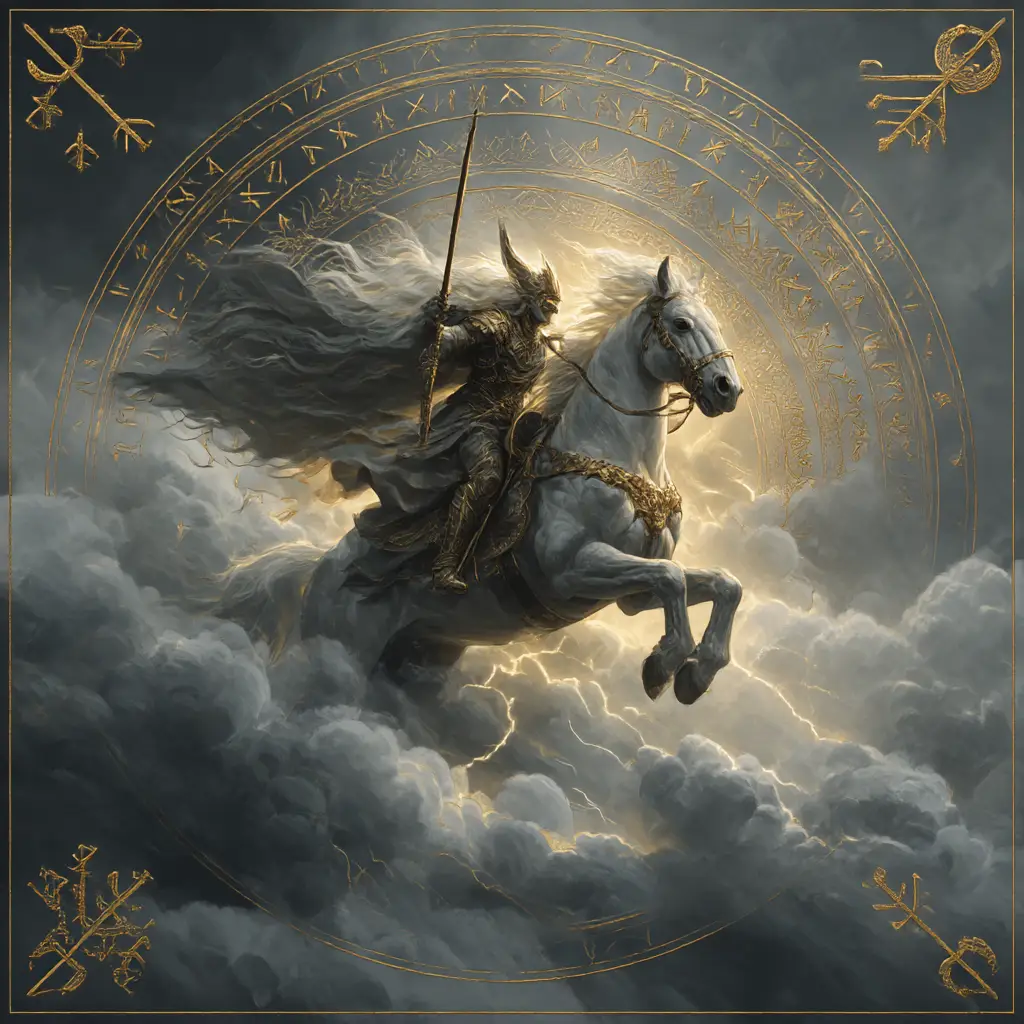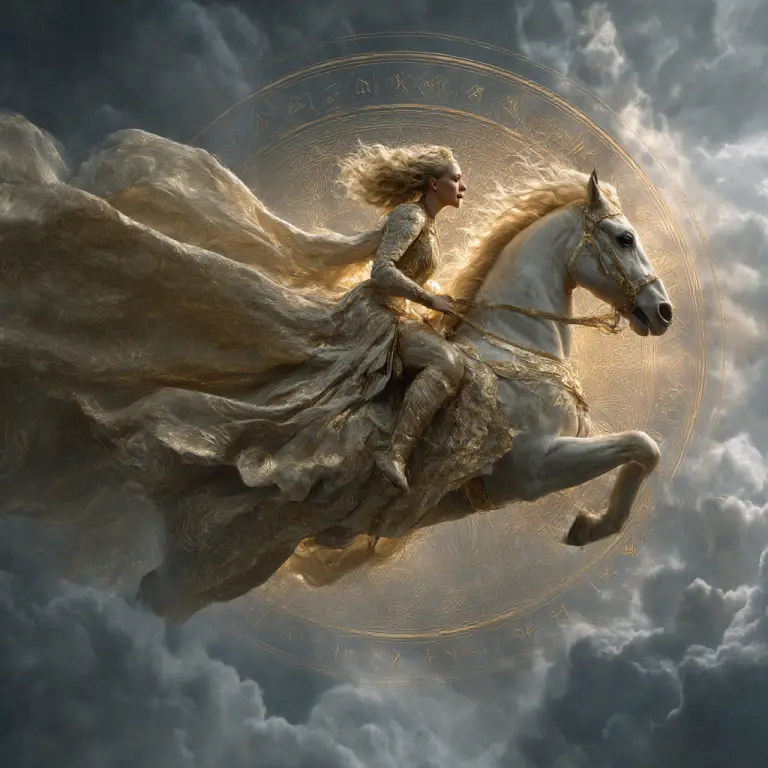In Norse mythology, Gná is a lesser-known yet important goddess who serves as the swift and far-seeing messenger of Frigg, the queen of the gods and wife of Odin. Her name is often associated with movement and grace, reflecting her role as a divine emissary who carries Frigg’s words and will across the Nine Worlds.
Gná’s defining feature is her ability to travel freely through air and sea, unhindered by distance or obstacle. She rides the remarkable horse Hófvarpnir, whose name means “he who throws his hoofs into the air.” This magical steed can move across the skies and over the waters with effortless speed, making Gná one of the most mobile figures in the Norse pantheon.
Snorri Sturluson’s Prose Edda briefly mentions Gná as one of Frigg’s attendants. When the other gods see her riding through the air, they ask who she is, and she replies that she is carrying out Frigg’s errands in distant worlds. This short passage reveals her as a link between realms, embodying communication, travel, and divine purpose.
Although Gná’s role in the surviving myths is small, her symbolism is powerful. She represents freedom of movement, the bridging of distances, and the unseen connections between worlds. Her horse, Hófvarpnir, stands as a symbol of boundless energy and the ability to transcend earthly limits.
In a wider sense, Gná reflects the importance of messengers and intermediaries in Norse belief. She is a reminder that even in a world of mighty gods and warriors, communication and swift passage are divine gifts. Gná’s presence in Frigg’s retinue underlines the queen’s wisdom and influence, as her reach extends far beyond Asgard through trusted emissaries like Gná.
For those studying Norse mythology, Gná is a figure of grace, duty, and divine mobility. Though her story is brief, her image—riding effortlessly across sky and sea—captures the essence of freedom and purpose that runs through the mythic world of the Aesir.



